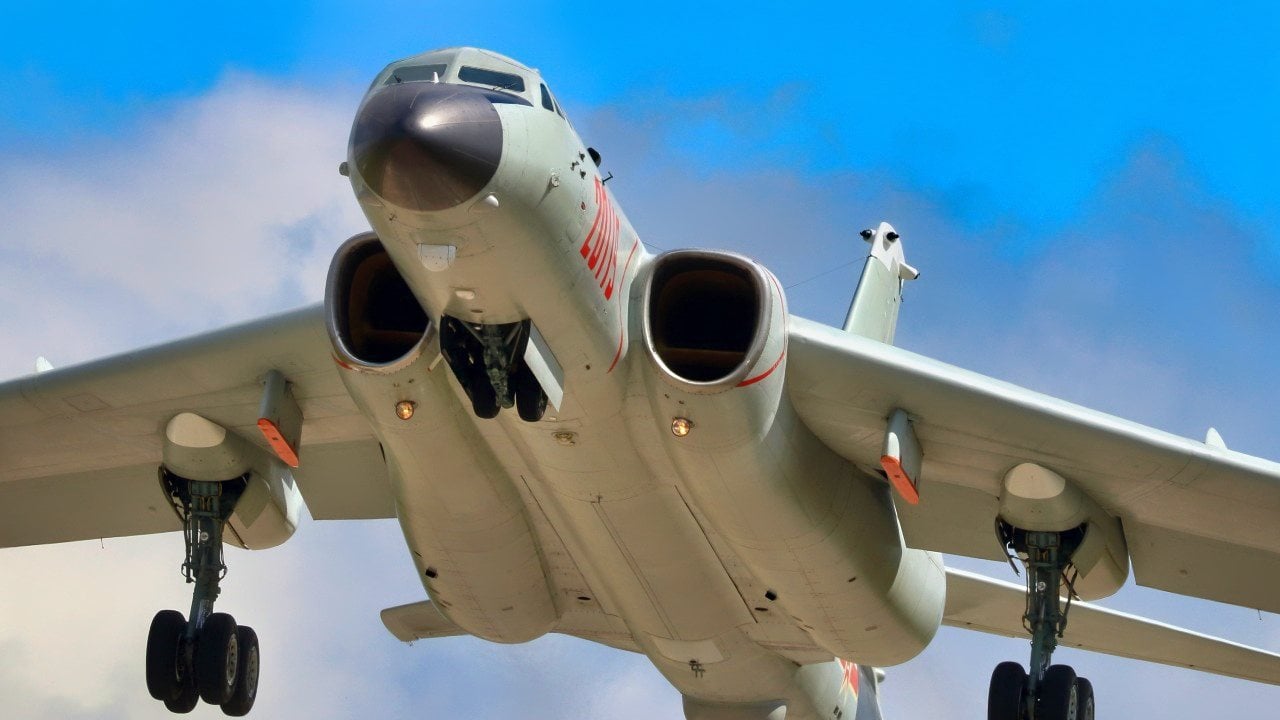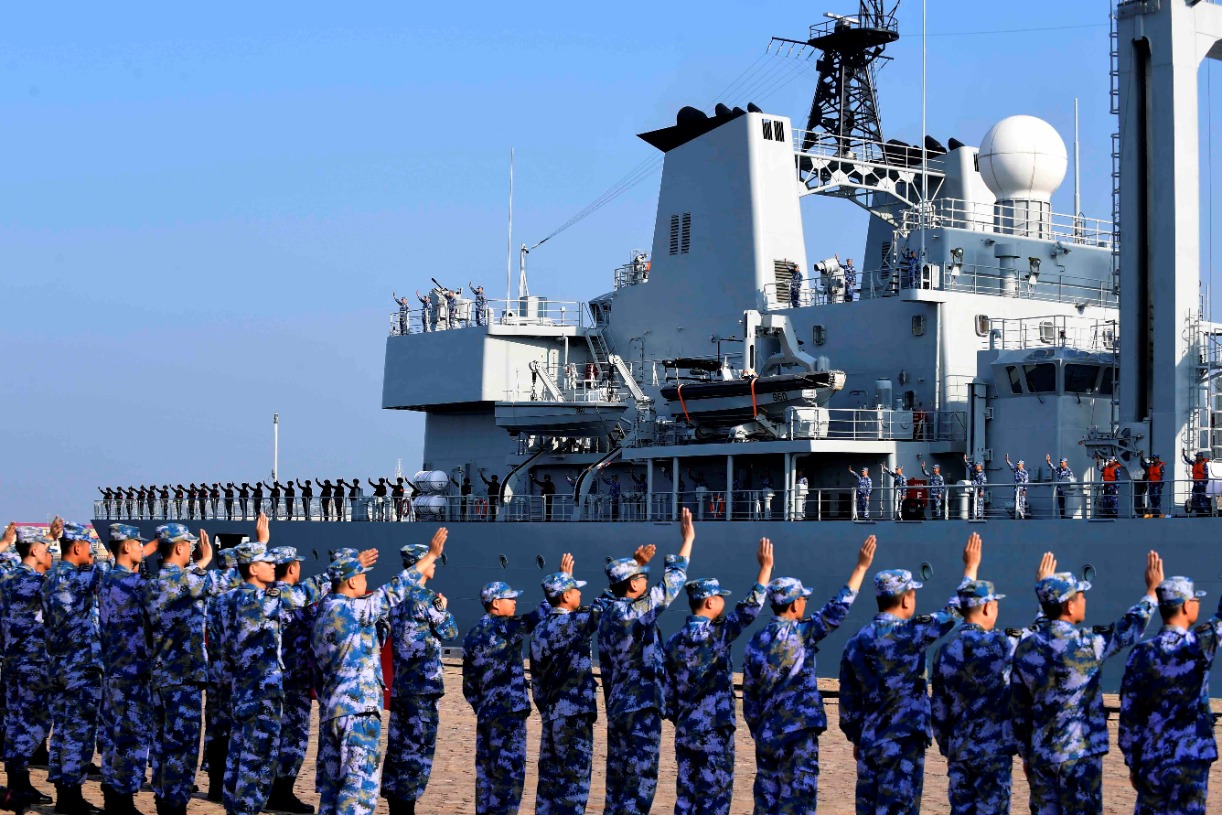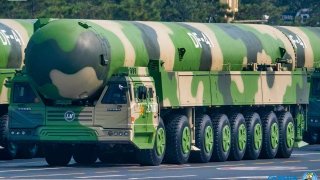China's DF-41 ICBM Could Hit the U.S. in a Nuclear War
The Dongfeng-41 (DF-41) is a road-mobile intercontinental ballistic missile system developed by China, significantly enhancing its nuclear capabilities.
Summary and Key Points: The Dongfeng-41 (DF-41) is a road-mobile intercontinental ballistic missile system developed by China, significantly enhancing its nuclear capabilities.

-With a range of 15,000 kilometers, the solid-fuel DF-41 can be launched rapidly from various locations, complicating U.S. defense strategies.
-Unlike the U.S., which has stationary ICBM silos, China's mobile system offers a reliable second-strike capability.
-The absence of a crisis hotline between China and the U.S. and the potential for Chinese cyber and space-based attacks further exacerbate the threat.
-The U.S. must reconsider its reliance on the nuclear triad and address vulnerabilities to prepare for potential nuclear conflicts with China.
China's DF-41: A Game-Changer in Global Nuclear Strategy
The Dongfeng-41, or simply DF-41 (also known as the CSS-20), is a road-mobile intercontinental ballistic missile system developed by the People’s Republic of China. It is the latest addition to China’s arsenal of nuclear weapons.
On top of relatively recent reports that China’s nuclear arsenal is much larger than officially acknowledged, the presence of these road-mobile ICBM systems is a highly complicating factor for the U.S. military.
In the event of a nuclear war, China has a certain level of redundancy in their ground-based systems. The United States, on the other hand, situates its ground-based ICBMs in stationary silos throughout the American Midwest. China at all times can know the physical location of all America’s ground-based ICBMs.
This, by the way, was the point of the dreaded balloon that became the obsession of most mainstream news sources last year. There was a reason that balloon floated over Malmstrom Air Force Base for as long as it did. It was likely collecting intelligence on the disposition of America’s nuclear forces on land.
Some Specs on DF-41
China’s DF-41 can launch a nuclear warhead at an operational range of some 15,000 kilometers, which means it can reach almost anywhere on Earth. The missile is powered by solid fuel, so it can be launched rapidly, without the lengthy fueling process of its liquid-fuel predecessors. And because it is a road-mobile system, it can be launched anywhere with a road network.
Of course, China is not the only nation to operate road-mobile missiles. Russia inherited this capability from the Soviets. The great Dan Akroyd and Chevy Chase comedy from the 1980s, Spies Like Us, depicts such a system.

Let’s not forget about the fact that Beijing, unlike Moscow during the heady days of the Cold War, lacks a “hotline” connection with Washington, D.C., to defuse potential nuclear standoffs. Even worse, Beijing doesn’t want such a hotline. China’s rulers have a longstanding preference for opacity over clarity in such times of crisis.
The DF-41 gives China a reliable second-strike capability against the United States, because they’re going to be very difficult to destroy in a U.S. first strike on China.
Their mobility and range will also make it much harder for Western countries to defend against.
The abject refusal of America’s elite to invest in space-based missile defense has done the most to ensure that the United States is permanently (and needlessly) threatened by these nuclear weapons systems. Still, even if the U.S. did possess space-based missile defenses, there’s no guarantee that they could stop all Chinese missiles such as the DF-41.
The U.S., with its lack of mobile launchers, does possess a nuclear triad (meaning it can launch nukes from land-based, sea-based, and air-based platforms).
China is developing a triad as well, but it might not be as complex as the Americans’.
China Can Do Damage to America’s Nuclear Triad
But China can do things to degrade America’s nuclear triad.
For example, co-orbital satellites could tailgate America’s Nuclear Command, Control, and Communication satellites in geostationary orbit. With those satellites gone, early warning capabilities would be eradicated, and other aspects of America’s triad would be significantly degraded, giving nuclear elements such as the DF-41 the space needed to score some critical hits against the dazed and confused Americans.
This is to say nothing of the cyberattacks that skilled Chinese hackers could carry out.

As the Russian SolarWinds hack showed in 2020, America’s nuclear infrastructure is not impervious to cyberattack. The Chinese could easily replicate that attack and go much further than the Russians did in 2020.
Most American war planners rest on the triad as the ultimate trump card against nuclear attack. They should not. China has an unpredictable leadership. And Beijing likes to maintain that unpredictability by refusing to engage in high-level crisis communications.
China’s military has ways it can disable American nuclear forces. Washington is not yet prepared for the possibilities of nuclear war with China.
About the Author:
Brandon J. Weichert, a National Interest national security analyst, is a former Congressional staffer and geopolitical analyst who is a contributor at The Washington Times, the Asia Times, and The-Pipeline.
All images are Creative Commons or Shutterstock.


